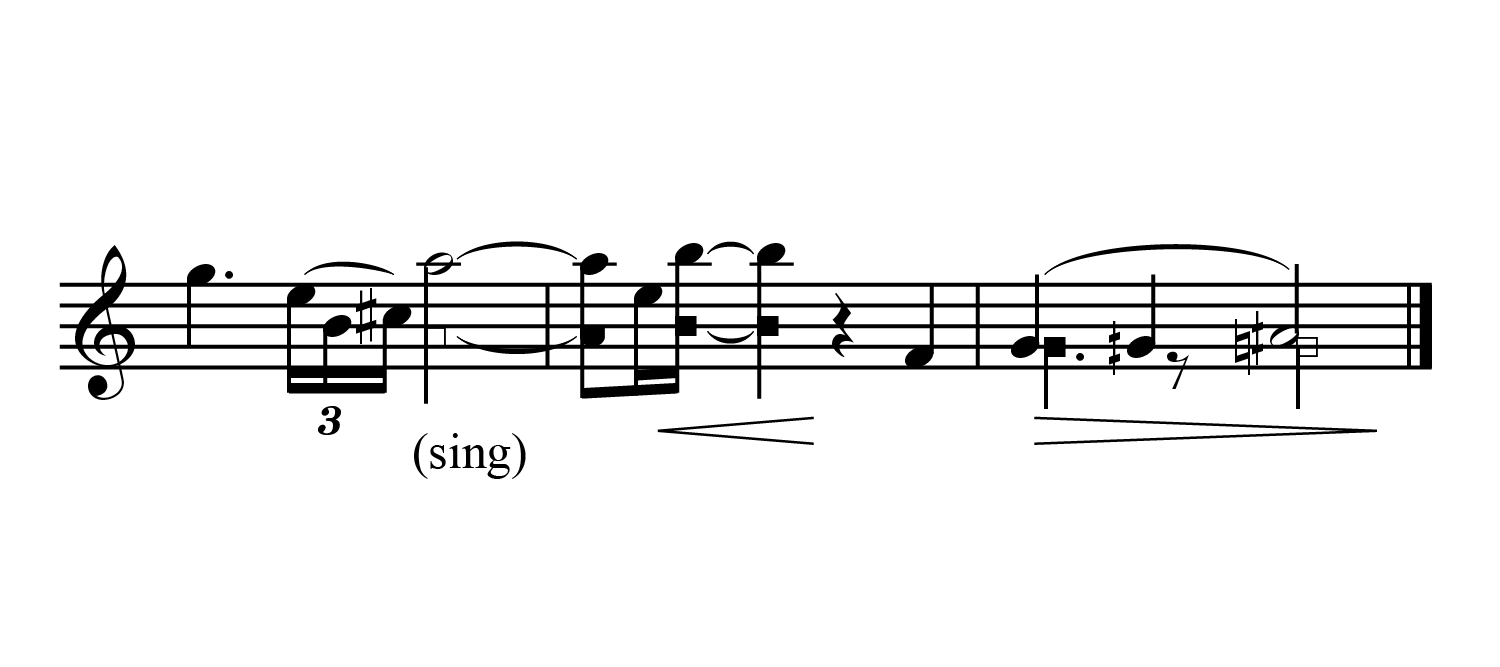Singing & playing
A note may be played and sung simultaneously to alter the timbre of the sound. Multiple sonorities may also be produced by singing different notes from those played, although it is advisable to keep vocal lines as simple as possible and within relatively close proximity of the played pitches. The played and sung parts can be rhythmically independent of each other, but it should be remembered that any articulation used will apply to both parts simultaneously.
Composers should note that the range of sung pitches varies between players, and it is worth including alternatives for male/female voices and and/or those with a limited vocal range. Sung pitches may be notated at transposed or concert pitch but this must be made clear in the score. Transposed pitches are often most helpful for players without perfect pitch. Where possible, pitch references should be included within the surrounding material to assist the player with accurate vocal intonation.
To write effectively for singing and playing, the composer must understand to an extent the amount of internal resonance required to play the alto flute. Players use the throat and internal cavities as resonators for the sound of the instrument. Singing unisons and pitches close to the sounded pitches (such as small intervals and octaves) does not cause much of a problem to the player, but wide leaps can cause difficulties as conflicting mouth shapes may be required for the vocal and playing pitches. Such considerations can sometimes be unique with an individual player, so again, providing ossia passages may be advisable.
Singing and playing can be extremely tiring for the performer, so extended passages should be avoided. It is also worth noting that many flute players are not trained singers and although basic vocal technique can be expected, it may be worth erring on the side of caution unless writing for a specific player’s abilities.
Singing and playing the same note
Singing and playing different notes
Notation of singing & playing
The clearest way to indicate singing and playing is to write the played note as normal, and using a square notehead for the sung pitch.
It may also be advisable to give the instruction sing under the passage concerned, and to define your notation in a glossary.

Vocal glissandi
Interference can be created through slightly de-tuning the voice on a unison pitch. Small glissandi in this way can be an effective alteration of tone colour.
Wide vocal glissandi from high pitched notes can create an extraordinary effect. However, it should be noted that this can be very tiring to perform as the player may have to leave their comfortable vocal range in order to achieve this effect.
Small vocal glissando on g'
Large vocal glissando on d'''
Large vocal glissando on d''
Notation of vocal glissandi
